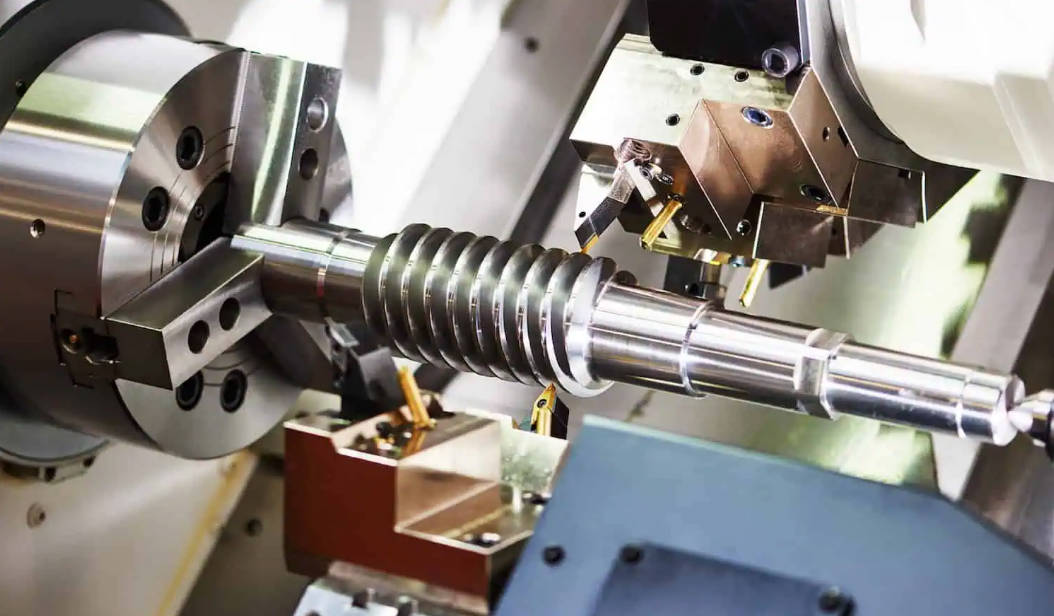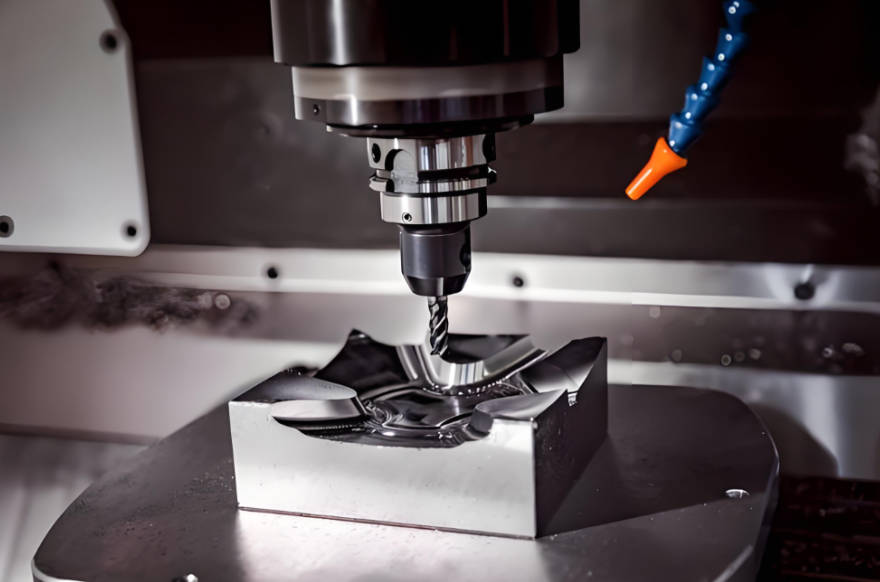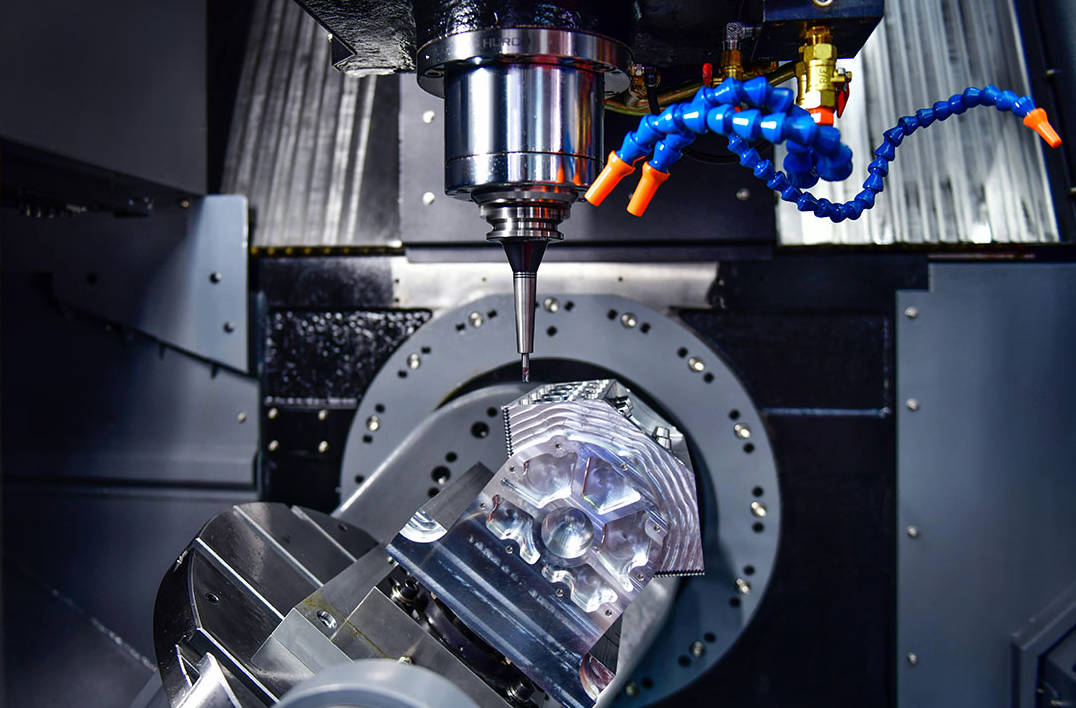Table of Contents
- I. Introduction
- II. Understanding CNC Milling
- III. Comparing CNC Milling with 3D Printing and Laser Cutting
- IV. Common Questions About CNC Milling Services
- V. Choosing CNC Milling for Your Project
- VI. Working with a CNC Milling Service Provider
- VII. Conclusion
I. Introduction
In the dynamic world of modern manufacturing, turning a digital design into a physical object can be achieved through a variety of powerful technologies. Among the most prominent and versatile are CNC (Computer Numerical Control) milling, 3D printing (additive manufacturing), and laser cutting. Each method offers a unique set of capabilities, strengths, and limitations, making the choice between them a critical decision that can significantly impact a project’s cost, quality, timeline, and ultimate success.
Choosing the right manufacturing process is no longer a decision reserved for large-scale industrial production. Engineers, designers, entrepreneurs, and hobbyists now have access to these advanced technologies, but with that access comes confusion. Is it better to build a part layer-by-layer or carve it from a solid block? When is a high-powered laser the most efficient tool? The answers depend entirely on the specific requirements of your project—from material properties and dimensional accuracy to production volume and budget constraints.
This comprehensive guide is designed to demystify these three cornerstone manufacturing technologies. We will delve deep into the mechanics of each process, compare them across key performance metrics, and provide clear, actionable advice. The primary purpose of this article is to address the most common questions users have when considering manufacturing services, with a special focus on CNC milling, helping you determine with confidence which method is the perfect fit for your unique application.
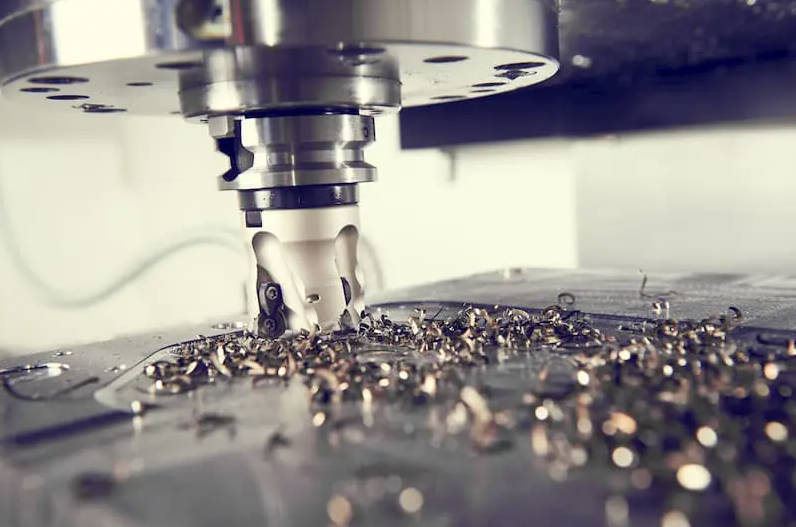
II. Understanding CNC Milling
What is CNC Milling?
At its core, CNC milling is a subtractive manufacturing process that uses computer-controlled cutting tools to selectively remove material from a solid block (known as a workpiece or blank) to create a final part. The process begins with a 3D CAD (Computer-Aided Design) model. This digital file is translated into a set of machine-readable instructions, called G-code, which dictates the precise movements of the cutting tool and the workpiece.
A multi-axis milling machine—typically with 3, 4, or 5 axes of movement—then executes these commands. A high-speed rotating cutter, shaped for specific operations like facing, pocketing, or drilling, is brought into contact with the workpiece, methodically carving away material layer by layer until only the desired geometry remains. This subtractive nature is the fundamental opposite of 3D printing’s additive approach.
Common Materials Used
One of the greatest strengths of CNC milling is its incredible material versatility. It can shape materials that are often impossible for other processes to handle, providing superior mechanical properties. Common materials include:
- Metals: Aluminum (e.g., 6061, 7075), Stainless Steel (e.g., 304, 316), Mild Steel, Alloy Steel, Titanium, Brass, Copper, and more.
- Plastics: ABS, Polycarbonate (PC), Nylon, PEEK, Acetal (Delrin), Acrylic (PMMA), and Teflon.
- Composites: Carbon Fiber, FR-4, G-10.
- Wood and Foams: For prototyping, modeling, and specific design applications.
Key Advantages
CNC milling is a preferred manufacturing method for several compelling reasons:
- High Precision and Tight Tolerances: CNC machines are renowned for their exceptional accuracy. It’s possible to achieve tolerances as tight as ±0.001 inches (0.025 mm), ensuring parts fit and function exactly as designed. This level of precision is critical for industries where performance is non-negotiable.
- Superior Material Properties and Durability: Because parts are machined from a solid block of material, they retain their inherent strength, thermal stability, and hardness. This results in robust, durable components suitable for demanding, end-use applications—a significant advantage over many 3D-printed materials.
- Excellent Surface Finish: CNC milling can produce parts with very smooth, finished surfaces directly off the machine. Various post-processing techniques, such as bead blasting, anodizing, and polishing, can further enhance the surface quality to meet cosmetic or functional requirements.
- Suitability for Complex Geometries: With multi-axis (4- and 5-axis) machines, it’s possible to create highly complex and intricate shapes with undercuts and complex curves that would be difficult or impossible to produce with other methods.
Typical Applications
The combination of precision, strength, and material flexibility makes CNC milling indispensable across a wide range of industries:
- Aerospace: Mission-critical components like engine parts, structural brackets, and landing gear components where strength-to-weight ratio and reliability are paramount.
- Automotive: Engine blocks, transmission components, suspension parts, and custom fixtures for assembly lines.
- Medical: Surgical instruments, orthopedic implants, and custom enclosures for medical devices requiring biocompatible materials and extreme precision.
- Industrial: Molds for injection molding, jigs, fixtures, and heavy machinery components that must withstand significant wear and tear.
- Electronics: Heatsinks, enclosures, and custom brackets for consumer and industrial electronics.
III. Comparing CNC Milling with 3D Printing and Laser Cutting
To truly understand when to use CNC milling, it’s essential to compare it directly against its most common alternatives.
3D Printing (Additive Manufacturing)
Overview
3D printing, or additive manufacturing, is the process of building a three-dimensional object from a CAD model, one layer at a time. Instead of removing material, it adds it. Common technologies include Fused Deposition Modeling (FDM), which extrudes a thermoplastic filament; Stereolithography (SLA), which cures a liquid resin with UV light; and Selective Laser Sintering (SLS), which fuses powdered material together with a laser.
Strengths
- Geometric Complexity and Design Freedom: 3D printing excels at creating highly complex, intricate, and organic shapes, including internal lattices and consolidated assemblies, with minimal difficulty. This is its single greatest advantage.
- Rapid Prototyping: It is exceptionally fast and cost-effective for producing one-off prototypes. A designer can have a physical model in hand within hours, allowing for quick design iteration and validation.
- Low Setup Costs and Material Waste: There is virtually no custom tooling or setup required, and the process only uses the material needed for the part, resulting in minimal waste.
Limitations
- Material Strength and Performance: While advancements are being made, most 3D-printed plastics and even metals do not match the mechanical properties (strength, durability, temperature resistance) of their bulk material counterparts used in CNC milling. The layer-by-layer construction can create anisotropic properties, meaning the part is weaker in one direction than another.
- Surface Finish and Accuracy: 3D-printed parts often have a visible layered texture and generally cannot achieve the same tight tolerances or smooth surface finishes as CNC-milled parts without significant post-processing.
- Production Speed at Scale: While fast for a single prototype, 3D printing is often slow for producing parts in higher quantities, making it less suitable for volume production.
Laser Cutting
Overview
Laser cutting is a thermal-based process that uses a high-powered, focused laser beam to cut, etch, or engrave materials. The laser melts, burns, or vaporizes the material along a path directed by a computer. It is primarily used for processing flat sheets of material.
Strengths
- High Speed for 2D Designs: For cutting profiles out of sheet materials like metal, acrylic, or wood, laser cutting is incredibly fast and efficient.
- Excellent Precision for Thin Materials: It can produce very fine details and sharp, clean edges with a minimal heat-affected zone, achieving high precision on 2D parts.
- Low-Cost for 2D Parts: It is a very economical method for producing flat parts in both low and high volumes.
Limitations
- Primarily 2D: The technology is fundamentally limited to cutting 2D profiles and cannot create complex 3D geometries with varying depths, pockets, or curved surfaces like CNC milling can.
- Material Thickness Restrictions: The effectiveness of a laser cutter diminishes significantly with material thickness. While powerful industrial lasers can cut thick metal, the process is best suited for relatively thin sheets.
- Material Restrictions: The process is not suitable for all materials. Reflective metals can be challenging, and some plastics release toxic fumes when cut.
CNC Milling vs. Alternatives: A Head-to-Head Comparison
To simplify the decision-making process, here is a comparative analysis:
| Feature | CNC Milling | 3D Printing (Additive Manufacturing) | Laser Cutting |
|---|---|---|---|
| Process | Subtractive (Material Removal) | Additive (Layer-by-Layer Addition) | Subtractive (Thermal Cutting) |
| Best For | High-strength functional parts, tight tolerances, smooth finish | Complex geometries, rapid prototypes, custom one-offs | Flat (2D) parts, intricate patterns, fast cutting of sheets |
| Dimensional Accuracy | Excellent (as tight as ±0.001″) | Good to Fair (typically ±0.005″ or wider) | Excellent for 2D profiles |
| Material Strength | Excellent (Isotropic, retains bulk properties) | Fair to Good (Often anisotropic due to layers) | Excellent (Retains material properties) |
| Material Selection | Very Wide (Metals, Plastics, Composites, Wood) | Wide but specific to technology (Plastics, Resins, some Metals) | Wide for sheets (Metals, Plastics, Wood, Fabric) |
| Surface Finish | Excellent (Smooth, can be polished) | Fair (Visible layers, often requires post-processing) | Excellent (Clean, sharp edges) |
| Geometric Complexity | Good to Excellent (with 5-axis machines) | Unmatched (Best for internal features, organic shapes) | Limited (Primarily 2D shapes) |
| Speed | Moderate to Fast (depends on complexity and volume) | Slow for production, fast for a single prototype | Very Fast for 2D cuts |
| Cost | Moderate to High (setup costs, machine time) | Low for prototypes, high for production | Low to Moderate (efficient for volume) |
When CNC Milling Excels: Choose CNC milling when your project demands high strength, tight dimensional tolerances, a superior surface finish, and you are using materials like high-grade aluminum or steel. It is the go-to choice for functional prototypes that must endure physical testing and for end-use production parts.
Scenarios for 3D Printing or Laser Cutting: If your primary need is a quick, low-cost physical model to check form and fit, 3D printing is almost always the better choice. For parts with incredibly complex internal channels or geometries that cannot be machined, 3D printing is the only option. If your project consists of flat parts cut from sheet material, laser cutting will deliver superior speed and cost-efficiency.
IV. Common Questions About CNC Milling Services
When engaging with a CNC milling service, clients often have a series of practical questions. Here are the answers to the most common inquiries.
What types of projects are best suited for CNC milling?
CNC milling is exceptionally versatile, but it truly shines in applications where performance cannot be compromised.
- Functional Prototypes: For prototypes that need to be tested under real-world mechanical and thermal stress, CNC milling provides parts with properties identical to the final product.
- End-Use Production Parts: For low-to-medium volume production runs, CNC milling is often more cost-effective and produces higher quality parts than casting or molding, especially for high-value components.
- Molds and Tooling: The precision and durability of CNC-milled parts make them ideal for creating injection molds, dies, and other forms of manufacturing tooling.
- Jigs and Fixtures: Custom jigs and fixtures used to hold parts during manufacturing or inspection are almost exclusively made via CNC milling due to the high accuracy and robustness required.
What materials can be used with CNC milling?
The range of machinable materials is vast. The choice depends on the application’s requirements for strength, weight, conductivity, chemical resistance, and cost.
- Metals: Aluminum 6061 is a popular general-purpose choice, offering a great balance of strength, machinability, and cost. Aluminum 7075 provides much higher strength for aerospace and high-performance applications. Stainless Steel (304, 316) offers excellent corrosion resistance. Titanium is used for its high strength-to-weight ratio and biocompatibility.
- Plastics: ABS is a cost-effective choice for general prototyping. Polycarbonate (PC) offers high impact resistance. Nylon is excellent for parts requiring low friction and high wear resistance. PEEK is a high-performance polymer with exceptional thermal and chemical resistance, often used as a metal replacement.
How precise is CNC milling?
CNC milling is a highly precise manufacturing process, capable of achieving tolerances as tight as ±0.001 inches (0.025 mm) or even better, depending on the machine, material, and specific application. Standard tolerances are typically around ±0.005 inches (0.127 mm), which is sufficient for most applications. Tighter tolerances increase machining time and cost, so it’s important to specify them only where necessary. Surface finish is also a key aspect of precision. It is measured by “Ra” (Roughness Average). A standard machined finish might be around 125 Ra (µin), while smoother finishes of 63, 32, or even 16 Ra can be achieved through specific tooling strategies and slower feed rates.
What are the cost considerations?
The cost of a CNC-milled part is influenced by several factors. Understanding these can help you optimize your design for affordability.
| Cost Factor | Description | How to Optimize |
|---|---|---|
| Machine Time | The single largest cost driver. The longer a part takes to machine, the more it costs. | Simplify geometry, avoid deep pockets, use standard fillet radii, and reduce the total volume of material removed. |
| Material Cost | The cost of the raw material block. High-performance metals or plastics are significantly more expensive. | Choose the most cost-effective material that meets your design requirements. Don’t over-specify. |
| Setup Time | The time it takes for a machinist to prepare the machine, load the material, and set up the tooling. | For larger quantities, the setup cost is amortized across many parts, reducing the per-unit cost. |
| Part Complexity | Parts requiring multiple setups or 5-axis machining are more complex and costly to program and run. | Design parts that can be machined from as few sides as possible. Consolidate complex features. |
| Tolerances & Finish | Tighter tolerances and very fine surface finishes require more machine time and special tooling. | Only apply tight tolerances and fine finishes to critical features and surfaces. |
In a cost comparison, a single 3D-printed prototype is almost always cheaper. However, as production volume increases to hundreds or thousands of units, CNC milling often becomes more cost-effective per part. Laser cutting is generally the cheapest for 2D parts at any volume.
How long does CNC milling take?
Lead times for CNC milling can range from a few days to several weeks.
- Prototyping: Many rapid prototyping services can deliver CNC parts in as little as 1-3 business days, depending on complexity.
- Production Runs: For larger quantities, lead times are typically longer, often 2-4 weeks, to allow for material sourcing, programming, and production scheduling.
The complexity of the part, material availability, and the shop’s current capacity all play a role in the final turnaround time.
Can CNC milling handle complex designs?
Absolutely. Modern 5-axis CNC milling machines can produce exceptionally complex geometries by moving the cutting tool and the workpiece simultaneously across five axes. This allows the tool to approach the part from all angles, enabling the creation of intricate contours, undercuts, and off-axis features in a single setup. This capability minimizes the need for multiple fixtures, which improves accuracy and reduces overall machining time for complex components.
What are the limitations of CNC milling?
Despite its strengths, CNC milling has some inherent limitations:
- Material Waste: As a subtractive process, it generates chips of waste material, which can be significant for parts with a low volume-to-stock ratio.
- Setup Time and Cost: The initial setup for a new part can be time-consuming and costly, making it less economical for one-off parts compared to 3D printing.
- Geometric Constraints: Certain features, like perfectly sharp internal corners (cutters are round) or very deep, narrow pockets, can be difficult or impossible to machine. Tool access is always a key design consideration.
V. Choosing CNC Milling for Your Project
Making the final decision requires a careful evaluation of your project’s core requirements.
Key Factors to Consider
- Material Requirements: If your part needs to be made from a specific grade of aluminum, steel, or another bulk material to achieve required strength, thermal, or chemical properties, CNC milling is the clear choice.
- Part Strength and Durability: For any part that will be subjected to significant mechanical stress, vibration, or impact, the superior, isotropic strength of a CNC-milled component is essential.
- Tolerances and Precision: If your design involves interlocking components, bearings, or other features requiring tight dimensional accuracy, CNC milling provides the necessary precision that 3D printing often cannot match.
- Production Volume: For one-off visual prototypes, 3D printing is faster and cheaper. For production runs of dozens to thousands of parts, CNC milling offers a scalable and repeatable solution with a lower per-unit cost.
Tips for Optimizing Designs for CNC Milling (DFM)
Designing with the manufacturing process in mind—known as Design for Manufacturing (DFM)—can dramatically reduce cost and improve the quality of your milled parts.
- Avoid Thin Walls: Very thin walls are prone to vibration and warping during machining, making them difficult to create accurately. Try to keep wall thicknesses above 0.030 inches (0.8 mm) for plastics and 0.020 inches (0.5 mm) for metals.
- Use Standard Tool Sizes: Design internal pockets and slots with corner radii that are slightly larger than a standard end mill size (e.g., 1/8″, 1/4″). This avoids the need for smaller, more fragile tools. Perfectly sharp internal corners are impossible; always design with a radius.
- Consider Tool Access: Ensure that the cutting tools can physically reach all the surfaces you intend to machine. Deep, narrow pockets with small openings are a common challenge.
- Keep Tolerances Realistic: Apply tight tolerances only to critical features. Loosening tolerances on non-critical dimensions will reduce machining time and cost.
- Minimize Setups: If possible, design your part so that all features can be machined from one or two sides. This reduces the number of setups required, which saves time and improves accuracy.
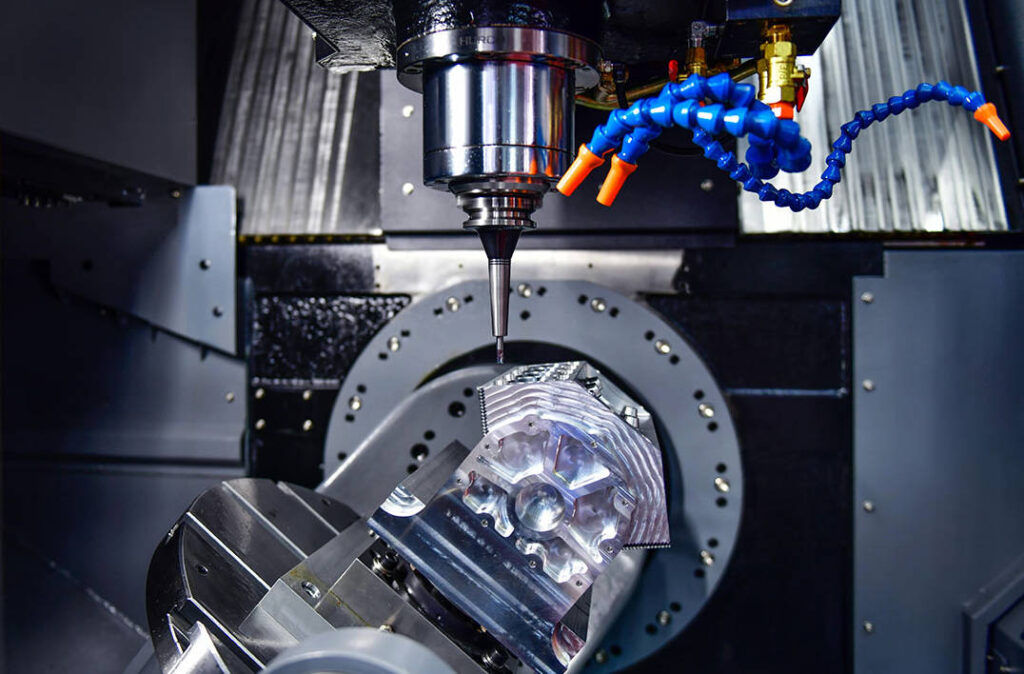
VI. Working with a CNC Milling Service Provider
Selecting the right partner is just as important as selecting the right process.
What to Look for in a Service Provider
- Experience and Expertise: Look for a provider with a proven track record in your industry and with the materials you require.
- Equipment and Capabilities: Ensure they have the right machinery for your project’s complexity (e.g., 3-axis vs. 5-axis) and the capacity to meet your lead times.
- Quality Control: Ask about their quality control processes. Do they have inspection equipment like CMMs (Coordinate Measuring Machines)? Are they ISO 9001 certified?
- Communication and Support: A good partner will offer DFM feedback and work with you to optimize your design for cost and manufacturability.
How to Prepare Your Project for a Quote
To get an accurate and fast quote, provide the following:
- CAD Files: A 3D model in a standard format (STEP is preferred, followed by IGES or STL).
- 2D Drawings: A technical drawing (e.g., in PDF format) that clearly specifies tolerances, surface finish requirements, threads, and any other critical information not contained in the 3D model.
- Material Specifications: Clearly state the desired material and any specific grade or standard (e.g., Aluminum 6061-T6).
- Quantity: Specify the number of parts you need, including any potential future volumes.
Questions to Ask Your Provider
- What is your standard lead time for this project?
- Can you provide DFM feedback on my design?
- What material options do you have in stock or readily available?
- What are your standard tolerances and surface finishes?
- What post-processing and finishing services do you offer (e.g., anodizing, plating, powder coating)?
VII. Conclusion
Navigating the landscape of modern manufacturing requires a clear understanding of the tools at your disposal. While 3D printing offers unparalleled speed and geometric freedom for prototyping, and laser cutting provides unmatched efficiency for 2D parts, CNC milling remains the undisputed champion for producing high-precision, durable parts with excellent material properties and superior surface finishes.
Its ability to shape high-strength metals and engineering plastics into functional components with tight tolerances makes it an indispensable process for critical applications across countless industries. By evaluating your project’s specific needs for strength, accuracy, material performance, and volume, you can confidently determine if CNC milling is the right choice.
The key to success lies in matching the right process to the right application. If your project demands robust performance and uncompromising quality, don’t hesitate to explore the capabilities of CNC milling.

